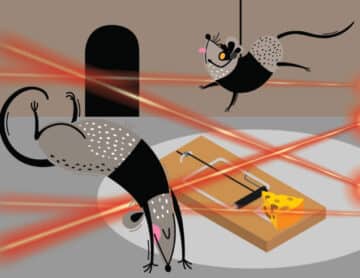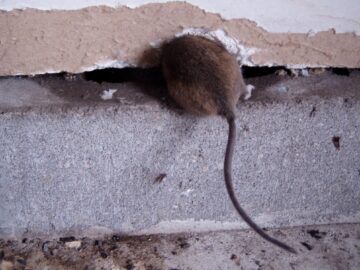Do You Have Mice or Urban Mice?
Over the last several years, Rainbow Pest Experts has faced challenging rodents in the Minneapolis and St. Paul metro that are bolder than the typical mouse. Whereas mice usually come through foundation cracks at ground level, we noticed rodents were following sewer pipes and getting into the basements of homes below the foundation. We also found they were smarter than mice and avoided our typical mouse baiting and trapping solutions. These rodents were fearless of humans and were entering rooms right in front of the homeowners.
At first, we suspected that we were dealing with a smaller rat; however, after consulting with our experts, we identified the culprit as a city mouse (or urban mouse), which is also found in other large metropolitan areas.

How have mice adapted?
There has been evidence of mice infesting human dwellings as far back as 15,000 years. Since the first time a mouse sought out the warmth and food sources provided within a living structure, we have had to adjust to sharing space (or find a way to eliminate) these annoying rodents. As our own living spaces have become more sophisticated over time, so have the mice.
Through adaptation, mice have developed traits and behavior more common in rats and have characteristics that separate them from a typical field mouse. We refer to this newer species as the urban mouse. Research has even shown that these urban mice have larger brains than their rural counterparts. (source)
All living organisms must adjust to conditions imposed on them by their environments to survive and reproduce. Otherwise, they risk extinction. When an organism evolves to suit the environment, it is what biologists call adaptation.
Urban mouse adaptation traits:
- More cautious of baits and traps–normal methods do not work
- Tend to be less fearful of people
- Able to climb almost anything
- Gnaw holes about 1 to 1½ inches in diameter
- Do not have a full white belly like other mice
- Will forage for food more broadly and freely inside
How to combat the urban mouse
Controlling the urban mouse requires unique procedures. Rainbow Pest Experts has studied and documented these mice, creating solutions to help combat the urban mouse. If you have a mouse issue and think it could be the urban mouse contact us today for a customized exclusion strategy.
Other items you may be interested in:

Tips for Do-It-Yourself Mice Control
Ever wondered how to manage a small mouse problem in your Minnesota home on your own? Below are tips from our team of pest experts

Mouse Control
Our mouse exclusion and prevention services control the current population and help prevent them from returning!

How to Prevent Mice in Your Minnesota Home
How to Prevent an Infestation of Mice in Your Minnesota Home You may ask, how bad is it to have mice inside your home, really?



